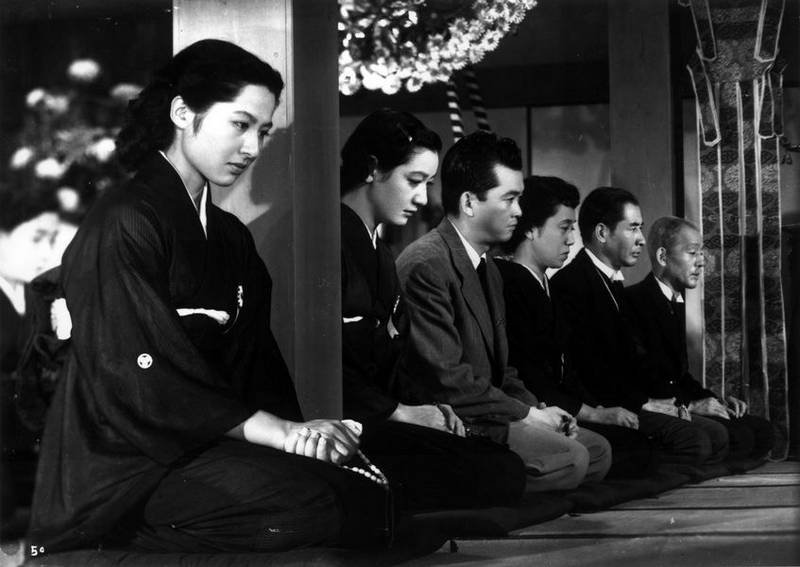Tokyo Story (1953) Film Review and Summary
SOFT 9/10
There is a propensity for sensational melodrama in the modern day expressions of dysfunctional families in cinema. Noah Baumbach has made a name for himself by showcasing toxic bloodlines in a film like The Squid and the Whale (2005), while someone like Matt Ross captured the humor of hyper-sheltered families in Captain Fantastic (2016). The most comparable 21st-century film to Yasujirō Ozu’s Tokyo Story (1953) is actually made by one of Baumbach’s frequent collaborators, Wes Anderson. Anderson’s The Royal Tenenbaums (2001) epitomizes the emotional detachment of generational wealth. More prevalently though, Anderson touches on a prioritized concern of Ozu’s; the maintenance of pedigree.
Shukichi (Chishû Ryû) and Tomi (Chieko Higashiyama) Hirayama return to visit their children and grandchildren in Tokyo, Japan and receive a cold reception. During their time in the city, many of their children are relatively neglectful towards their parents, aside from Noriko (Setsuko Hara), the widowed wife of one of their sons who succumbed to war. Noriko tries her best to entertain the couple, taking them out on commercial tours of the city, but it seems to produce a superficial moment of bonding where there is no dialogue or true intimacy in sight. The other children, Koichi (So Yamamura) and Shige (Haruko Sugimura), acknowledge their lack of attention, but do so by sending their parents to a youthful and exuberant spa that is not meant for the elderly. The concept of time is reflected sorrowfully as the couple understands how they’ve outgrown city life, or that society is rendering them as negligible. Old habits die hard though and Shukichi copes with this depressing situation by returning to alcoholism, much to the dismay of his children. Although Tomi is similarly conflicted, her struggles are much more internalized. As the parents are about to board a train to leave the city, Tomi begins to feel physically unwell and is unfit to travel. In early cinema, trains were often a focal point for directors to personify the passage of time, as its magnitude allows it to enter and exit the frame at the same time, all while it is still in motion.
Tomi is unable to recover and eventually passes away; one of the children, Keizo (Shirō Ōsaka), arrives too late due to work and finds her deceased. Each child’s occupational ventures dominate their lives, a sentiment that Shukichi shares during his tenure of alcohol indulgence at a bar earlier. Shukichi talks with other fathers who agree in their measure of evaluating children by their accomplishments, but also seem to believe that this same generation lacks further ambition. Without taking accountability for instilling these motives within his own children, Shukichi seems to realize that his children have become desensitized by their success, causing them to lose their general passion and emotional compass. Now, in all its dark irony, Shokichi is damned to spend the rest of his life alone after an attempted vacation that was supposed to strengthen relationships.
This is a complex enough narrative on its own, but Ozu does a wonderful job at constantly implementing his own stylistic flare, or lack of it, to accentuate the poignancy of his thematic propositions. Ozu virtually disregards the 180-degree rule of film, consistently placing the focus on faces staring right back at the audience during moments of dialogue; effectively breaking the “4th wall” without truly doing so. Besides b-roll, most cinematography is shot at below the eye-level, making it seem like the camera is sitting alongside characters. The act of sitting is a tool in itself used by Ozu, as he places the cast at different layers of field depth to act out scenes in one singular frame, rather than switching between intensified focuses on those who are speaking. Many of these scenes take place indoors as well, and while the film lacks geographical continuity, Ozu repeats so many of the same camera placements that he creates his own artificial structure of character movement. This is only reinforced by his ultimate restraint towards dollies and camera-pans/tilts, opting to employ still and repetitive camera placements that follow characters around whatever building they’re in; characters would occasionally move in and out of frames, but the frame itself would stay put.
This minimalistic approach to filmmaking is only heightened by the way scenes with dialogue are structured. Long pauses, awkward silences and other natural conversational occurrences are often included, allowing the cast, instead of the screenplay, to dictate the pace of the film. Minor interactions such as Koichi stopping his mother from moving his bag with a simple hand motion in the middle of a conversation only bolster the naturality of Ozu’s creative decisions, as well as by providing the subtle context of independence that each of the children clearly take pride in.
Tokyo Story is a tragic, but insightful, tale of familial dysfunction at its least sensitive. The children all understand their inherent responsibilities to care for their parents, so they basically inject money into their lives to help ease their duties of caring for them. This amounts to no true sign of attentiveness though, as they are also quick to scavenge the materialistic remains of their own mother soon after her own death. Noriko seems to be the only member of the family that is not soiled by the group’s laborious reputation, but it seems to be out of a sense of indebtedness to the parents. The film ends with Shukichi urging Noriko to waive her disillusionment of having to remain alone out of respect for his own son; Shukichi sympathizes with the inherent loneliness of adult life, especially without a partner, but he accepts his fate at his current age and state. Noriko still has her youth and time to reshuffle her priorities for the better, not in replication of the Hirayama way.


